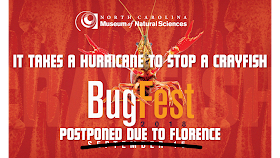I’m a little surprised to realize that one of my most recent papers, about the crayfish pet trade, marks almost ten years of “following my nose.” This is a series of little projects that I keep thinking, “This might be nothing,” But they have not just turned into “something,” but they have been some of my more highly cited papers.
While working on my previous papers on the crayfish pet trade (Faulkes 2013), I noticed that some states and provinces have laws that would make having pet crayfish illegal. But I could still find people placing ads for crayfish on aquarium sites.
I though a lot more about whether legislation had any affect on whether people bought and sold crayfish when looking at sales of crayfish in Ireland (Faulkes 2015, 2017), since I believed at the time (wrongly) that crayfish were illegal there.
While working on those papers about Irish crayfish, I realized that whether laws work was actually something I could test using online ads. Because different jurisdictions had different laws, you had a sort of natural legislative experiment.
But while the expression “laboratories of democracies” is a phrase that is bandied about in US politics, any federal system will do. And, to my surprise, I ended up studying my home: the prairie provinces of Canada.
 In looking back at this series of papers, one of the things that I am slightly surprised by, and proud of, is how I was able to improve the techniques. I know that looking at websites isn’t exactly the same as learning how to do some complex lab technique, but still, the potential for how to do some of these things are only obvious in hindsight.
In looking back at this series of papers, one of the things that I am slightly surprised by, and proud of, is how I was able to improve the techniques. I know that looking at websites isn’t exactly the same as learning how to do some complex lab technique, but still, the potential for how to do some of these things are only obvious in hindsight. I started off with a survey on my own website, moved to general Google Alerts, then to online auction site ads. The description of the trade in crayfish is more detailed and precise than I started with, and it’s more detailed and precise than I find in similar papers.
Plus, I have finally reached a point where I am using these online monitoring methods to do more than just describe the pet trade of crayfish: I’m using those hand-scraped classified ads data to test hypotheses. It’s the kind of subtlety in methodological refinement that you might not be able to get if you’re just looking at single papers.
I was also pleased the paper found a home in another journal that I had never published in before, Nauplius. I learned about the journal a couple of years ago. I may have read articles from the journal before, but never really clicked in to what the journal was. An well-established, open access society journal with no article processing fees? I’d take twenty, thanks, if I could.
Is this the end of the trilogy of six about the pet trade? I’m not sure. I think I might have an idea for at least one more paper on the pet trade paper. I might have an idea for how to test a question with even more nuance.
References
Faulkes Z. 2010. The spread of the parthenogenetic marbled crayfish, Marmorkrebs (Procambarus sp.), in the North American pet trade. Aquatic Invasions 5(4): 447-450. https://doi.org/10.3391/ai.2010.5.4.16
Faulkes Z. 2013. How much is that crayfish in the window? Online monitoring of Marmorkrebs, Procambarus fallax f. virginalis (Hagen, 1870) in the North American pet trade. Freshwater Crayfish 19(1): 39-44. https://doi.org/10.5869/fc.2013.v19.039
Faulkes Z. 2015. Marmorkrebs (Procambarus fallax f. virginalis) are the most popular crayfish in the North American pet trade. Knowledge and Management of Aquatic Ecosystems 416: 20. https://doi.org/10.1051/kmae/2015016
Faulkes Z. 2015. A bomb set to drop: parthenogenetic Marmorkrebs for sale in Ireland, a European location without non-indigenous crayfish. Management of Biological Invasions 6(1): 111-114. https://doi.org/10.3391/mbi.2015.6.1.09
Faulkes Z. 2017. Slipping past the barricades: the illegal trade of pet crayfish in Ireland. Biology and Environment: Proceedings of the Royal Irish Academy 117(1): 15-23. https://doi.org/10.3318/BIOE.2017.02
Faulkes Z. 2018. Prohibiting pet crayfish does not consistently reduce their availability online. Nauplius 26: e2018023. http://dx.doi.org/10.1590/2358-2936e2018023


























